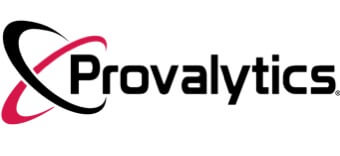Marketing Measurement: The #1 Challenge Facing Organizations Today in a Privacy-First World
In today’s rapidly evolving digital marketing landscape, marketing measurement is no longer a luxury—it’s a necessity for connecting marketing efforts to real business outcomes. Yet, organizations face unprecedented challenges. Privacy regulations, data fragmentation, and siloed tools are creating profound blind spots that undercut marketing’s effectiveness and success.
The stakes couldn’t be higher. Without a single source of truth, misalignment between marketing and finance leads to conflicting priorities and stifled growth. Addressing this challenge requires a multi-faceted approach, one that adapts to privacy regulations while aligning teams, partners, and data systems.
🚀 Yes, I Want The 2026 Playbook!
This article explores how organizations can meet this challenge head-on and highlights how tools like Provalytics can empower marketers to thrive in this privacy-first world.
The Shift to Privacy Regulations: Data Blind Spots and a 37% Revenue Decline
The digital marketing world has been shaken by the introduction of privacy regulations like Apple’s App Tracking Transparency (ATT) policy. When ATT rolled out in April 2021, it gave users the ability to opt out of cross-app tracking—a choice that 80–85% of users embraced. For marketers, this change created massive data blind spots, reducing their ability to target and measure ad performance effectively.
The economic impact has been staggering. A recent study found that businesses heavily reliant on targeted advertising through platforms like Meta experienced a 37% revenue decline. Conversion-optimized Meta campaigns critical for driving online sales saw click-through rates plummet by 37%, and the platform’s ability to measure off-platform conversions effectively was also degraded.
This is not just a technical problem; it’s a business crisis. Consider a mid-sized beauty retailer whose finely tuned Meta campaigns drove significant revenue before ATT. Post-ATT, their ability to retarget customers evaporated, conversion rates dropped, and within months, sales fell by 30%. Attempts to shift budgets to other platforms yielded some recovery but fell short of reversing the damage.
These stories are far from isolated. For many businesses, especially smaller e-commerce brands, the loss of precise targeting and measurement has driven up customer acquisition costs and eroded profitability.
Step One: Aligning the Internal Marketing Team
The path to overcoming these challenges begins within the marketing team itself. Surprisingly, one of the biggest obstacles to adopting a single source of truth is the team’s reliance on traditional tools like Google Analytics 4 (GA4) or click-based attribution models.
These tools, while familiar, fall short in today’s privacy-first landscape. They focus narrowly on last-click metrics, ignoring the broader contributions of upper-funnel activities like TV ads or sponsorships. In a world where privacy regulations are creating blind spots, these models are not just inadequate—they’re misleading.
The first step is a cultural shift. Marketing teams must recognize that tools like Provalytics, with its privacy-centric and tagless attribution capabilities, offer a more accurate picture of performance. This requires alignment across the team, from the CMO down to optimization specialists. By agreeing to adopt a solution that is “less wrong” than the alternatives, marketing teams can build a foundation for true measurement success.
Step Two: Aligning Agencies and External Partners
Once the internal team is on board, the next challenge is aligning external agencies and partners. Agencies often operate in silos, focusing solely on platform metrics like Meta’s CPA or ROAS. While these metrics may look strong in isolation, they fail to account for the broader context, such as how upper-funnel activities influence lower-funnel conversions.
For example, a paid social agency might report stellar performance metrics for a Meta campaign while ignoring the impact of a concurrent NFL TV buy managed by the brand team. This siloed approach creates blind spots that hinder optimization and collaboration.
Provalytics bridges this gap by offering restricted yet holistic views of performance. Agencies can see their own data in context—showing how Meta performs across the entire funnel and in relation to other channels. This shift requires agencies to embrace a new mindset, but the payoff is immense: better insights, better optimization, and better results.
Step Three: Migrating Data Internally
The third step is technical but critical: migrating marketing data into the organization’s internal systems. Most organizations rely on internal dashboards for decision-making, and if marketing data isn’t integrated into these dashboards, it risks being overlooked.
Finance teams, in particular, often default to last-click metrics, which misrepresent marketing’s true impact. Provalytics solves this challenge by providing flat files that can be easily imported into any visualization tool, from Datorama to Tableau to Looker.
This integration ensures that marketing data is accessible, actionable, and aligned with other business metrics. By embedding marketing insights into the organization’s existing workflows, Provalytics helps elevate the role of marketing in strategic decision-making.
Step Four: Aligning Marketing and Finance
The final step is fostering alignment between marketing and finance. This isn’t just about sharing data—it’s about building a shared understanding of what the data means and using it to drive strategic discussions.
When marketing and finance teams look at the same data, they can:
- Set Budgets: Allocate resources to the channels and campaigns that deliver the best outcomes.
- Align on Outcomes: Agree on what success looks like, from revenue growth to customer acquisition.
- Prove Impact: Demonstrate how marketing efforts contribute to the organization’s broader goals.
Provalytics facilitates this alignment by providing privacy-centric, tagless attribution that delivers validated and incremental insights. These insights enable organizations to move beyond last-click metrics and build trust between marketing and finance.
Finding Opportunity Amidst Privacy Challenges
While privacy regulations like ATT have created significant challenges, they also present opportunities for innovation and growth. Businesses that adapt to this new landscape by embracing privacy-focused tools and first-party data strategies can turn blind spots into opportunities.
Provalytics is uniquely positioned to help organizations thrive in this privacy-first world. With tagless attribution, cross-platform integration, and validated insights, Provalytics empowers marketers to navigate complexity, prove impact, and build deeper connections with customers.
A Call to Action: The Time to Adapt Is Now
The 37% revenue decline caused by privacy regulations is a wake-up call for marketers everywhere. It’s a stark reminder that the old ways of measurement and targeting are no longer sufficient. But it’s also a call to action—a chance to embrace new tools and strategies that not only overcome these challenges but unlock new opportunities for growth.
At Provalytics, we believe in the power of innovation to transform challenges into opportunities. By aligning teams, migrating data, and fostering collaboration, we can help organizations thrive in a privacy-first world.
Ready to take the first step?


